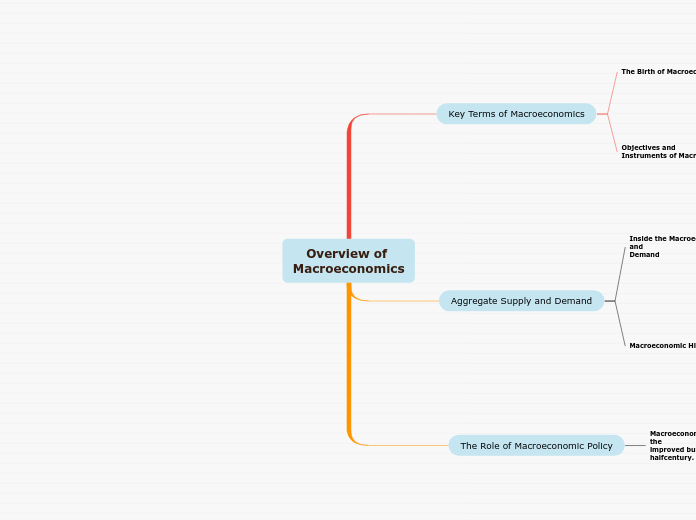Overview of Macroeconomics
Key Terms of Macroeconomics
The Birth of Macroeconomics
The 1930s marked the first stirrings of the science of macroeconomics, founded by John Maynard Keynes
Keynes
(1883–1946) was a many-sided genius who
won eminence in the fields of mathematics, philosophy, and literature.
The U.S. Congress formally proclaimed
federal responsibility for macroeconomic performance
Objectives and
Instruments of Macroeconomics
Having surveyed the principal issues macroeconomics, we now turn to a discussion of the major goals and instruments of macroeconomic policy.
Measuring
Economic Success
The major macroeconomic goals are a high level and
rapid growth of output, low unemployment, and stable prices
Output
Gross Domestic Product
Unemployment rate
Price index
Inflation
Aggregate Supply and Demand
Inside the Macroeconomy: Aggregate Supply and
Demand
Aggregate Supply refers
to the total quantity of goods and services that the nation’s businesses willingly produce and sell in a given period.
Price level and costs
Potential output
Capital, labor, technology
Aggregate Demand refers to the total
amount that different sectors in the economy willingly spend in a given period.
Monetary policy
Fiscal policy
Macroeconomic History: 1900–2008
Wartime Boom
The American economy entered
the 1960s having experienced multiple recessions.
Tight Money, 1979–1982.
The 1970s were a time
of troubles, with rising oil prices, grain shortages, a sharp increase in import prices, union militancy, and accelerating wages.
The Growth Century.
The final act in our macroeconomic drama concerns the growth of output and prices over the entire period since 1900
The Role of Macroeconomic Policy
Macroeconomic policy played a central role in the
improved business-cycle conditions of the last halfcentury.
The application of fiscal policy,
and especially monetary policy, helped lower unemployment and ensured largely stable prices over the last two decades.
When the United States faced a major shock to its fi nancial system in 2007–2009, central bankers remembered and understood the lessons of the Great Depression
